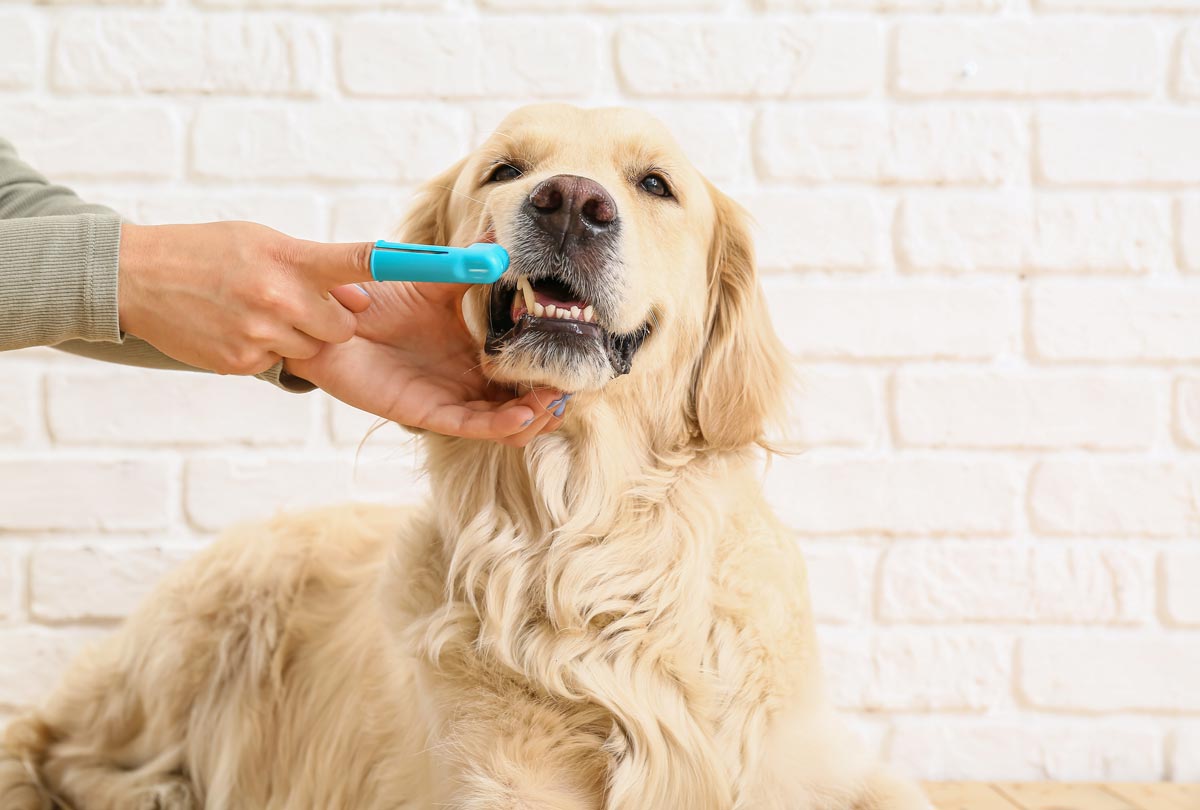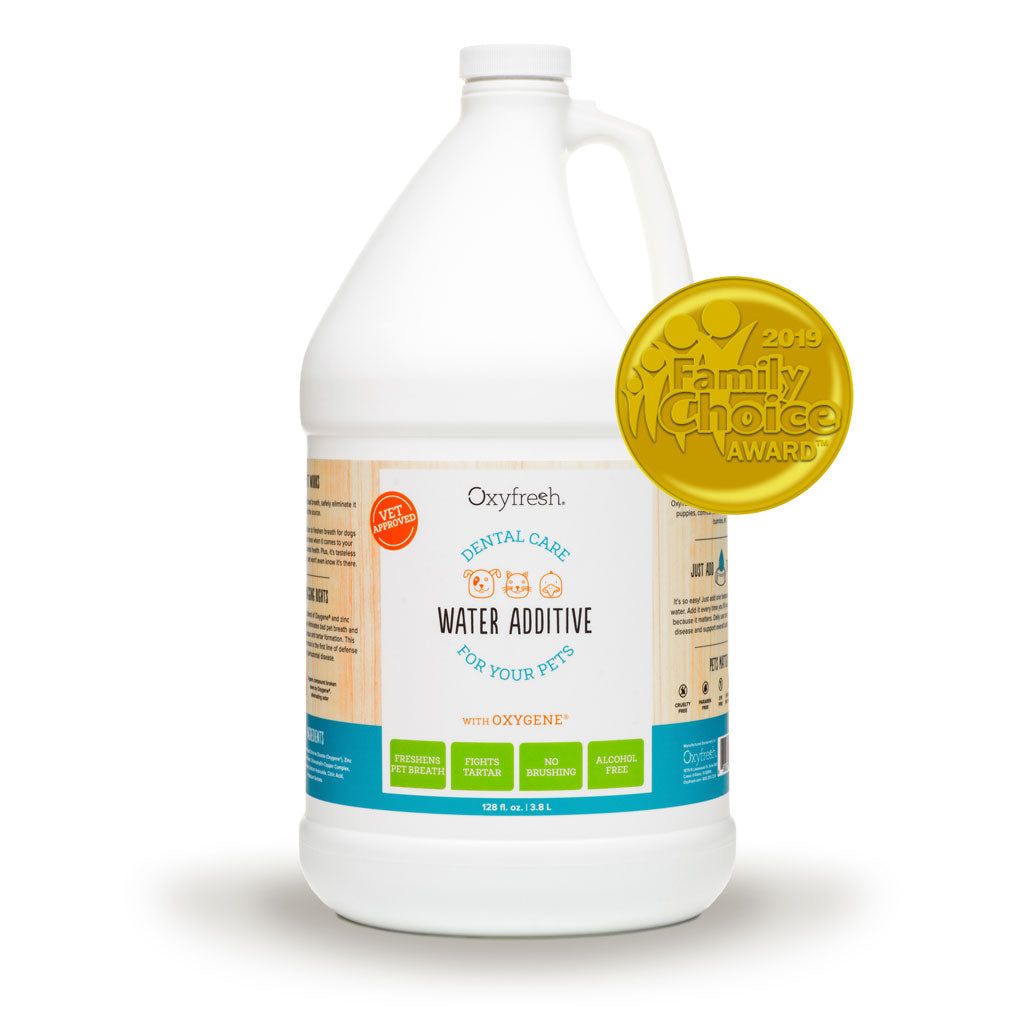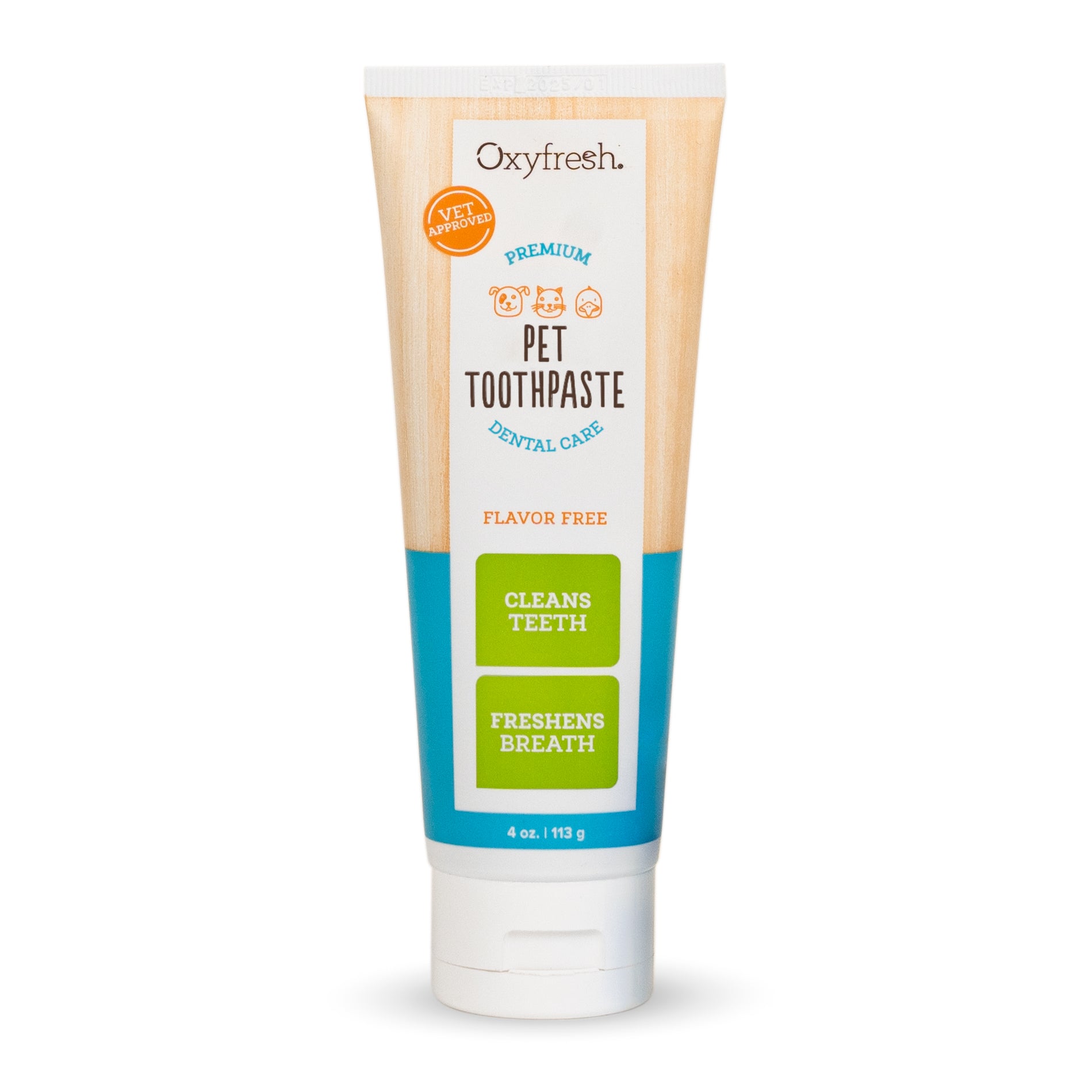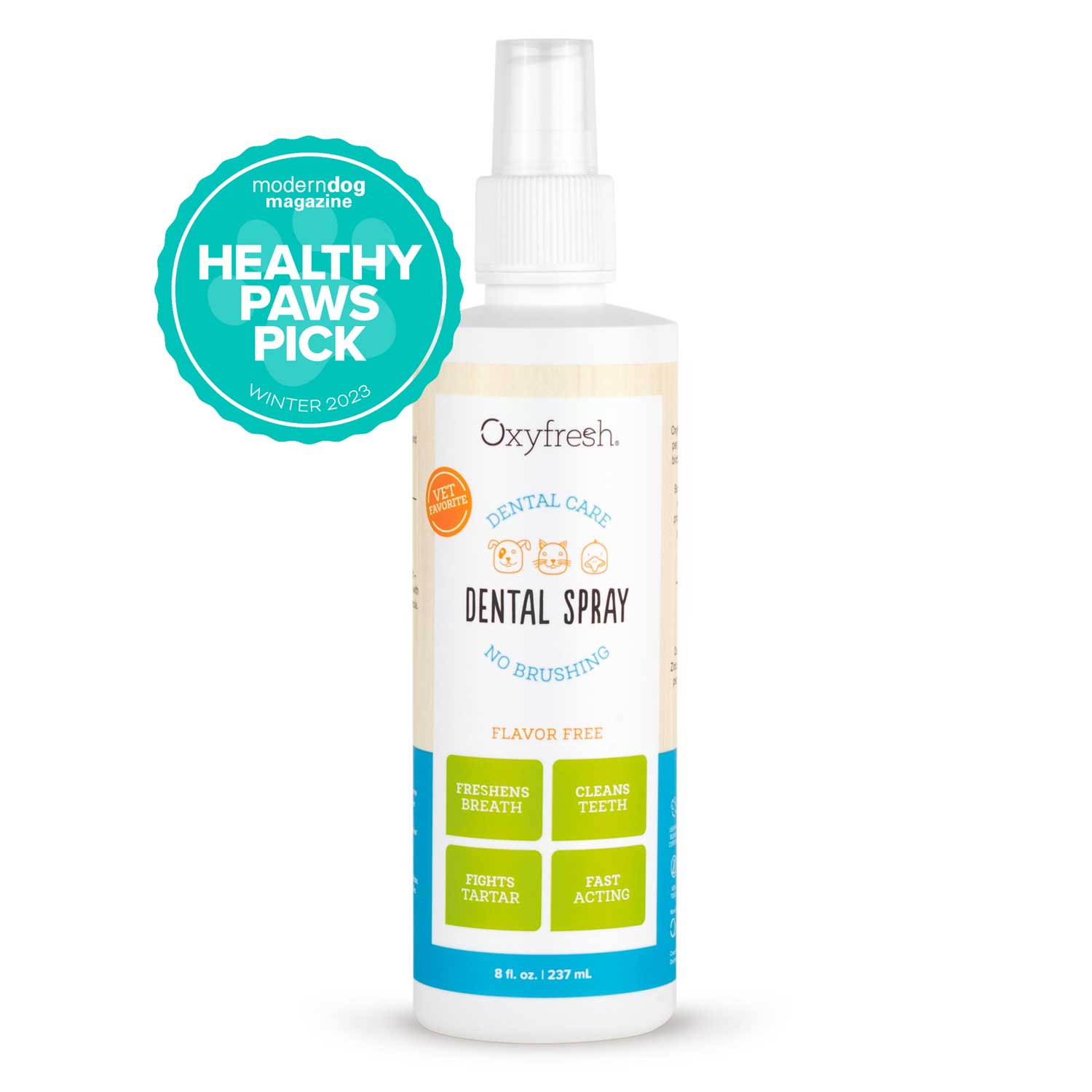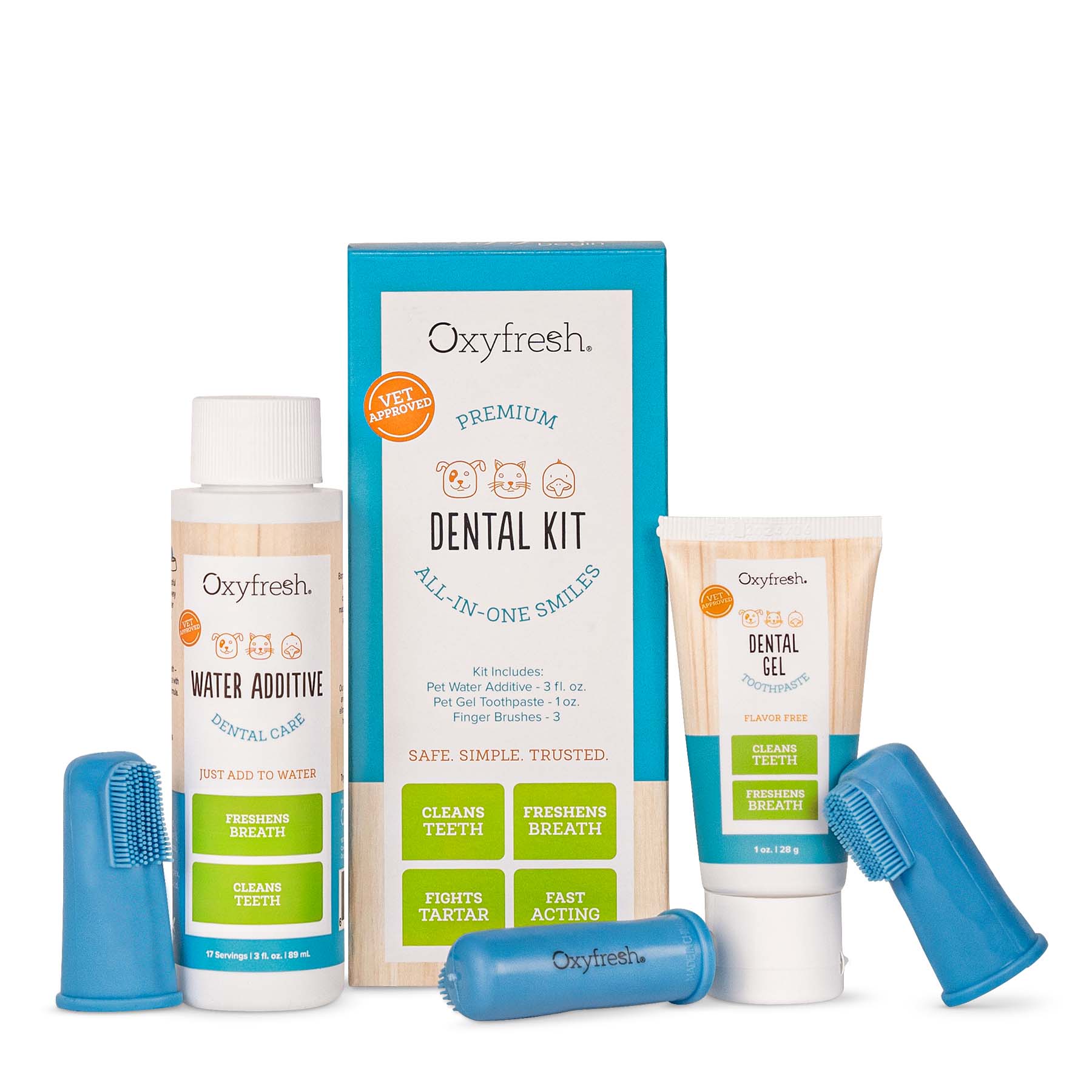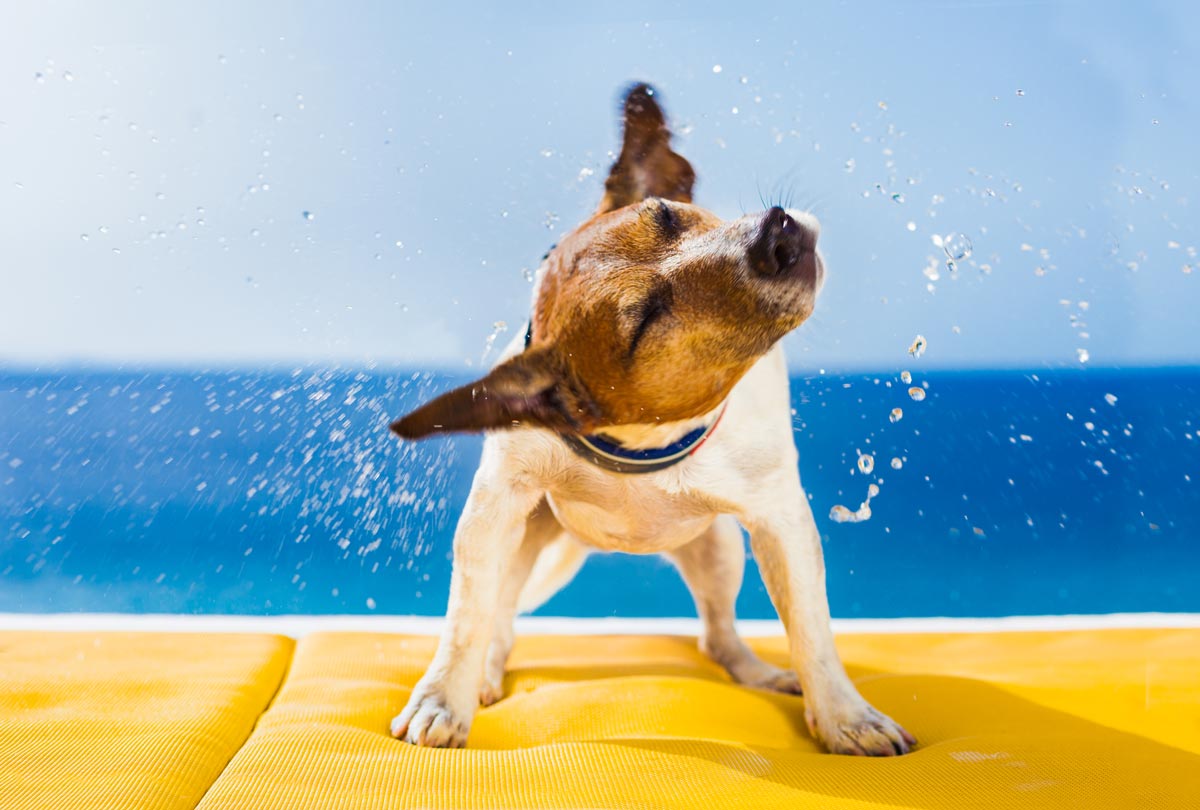"You have a cavity." Humans aren’t the only ones who can get this bad report. Dog cavities (caries) affect 5% of our canine friends over the age of one.
A dog cavity, like a human cavity, is a hole in the tooth where the enamel has been eaten away, getting filled up with harmful bacteria, which causes tooth decay. Keep reading to discover how to protect your pup (and your wallet) from dog cavities.
Why Are Dog Cavities a Rare Occurrence?
Nearly 90% of people have had a cavity, but as you’ve read, cavities in dogs are rare, affecting only 5% of pooches. Here’s why it’s uncommon for dogs to get cavities:
- Dog saliva is more alkaline, while human saliva is more acidic (acid is what causes cavities ... it eats away at the enamel).
- Dog teeth are more cone-shaped versus flat and griding, so there are fewer places for bacteria to hang out.
- Dogs aren’t consuming high-acid diets of processed sweets, carbs and sodas (at least we hope not)!
- Dog teeth have more space between them, so food can’t get trapped in the spaces and rot.
Important: Even though dog cavities are rare, you’re not off the hook when it comes to caring for your pup’s teeth. Dogs have a high risk of other dental problems, namely gum disease. In fact, gum disease is so common, it affects 90% of dogs by age two!
What Do Dog Cavities Look Like?
Dog cavities typically form on the biting surfaces of the molar teeth, especially the second-to-last teeth, top and bottom. These molars are the least sharp of the teeth and the ones that most resemble human teeth.
If your dog has a true cavity, the lesion will be brown to black in color and have a soft, sticky exterior when probed. But here’s the deal: even if you’re a bona-fied tooth brusher or pooch smoocher, chances are you’re not getting a good look at the biting surfaces of your dog’s teeth. (It’s the outer surfaces of dog teeth that are most visible.) That’s why dog cavities are hard to spot at home and yearly dental checkups at the vet are so important.
Signs Your Dog Has a Cavity
Dog cavities are difficult to detect at home unless you can get a good look at the biting surfaces of your dog’s teeth. However, most dogs who get cavities also have gum disease, and those signs are easy to spot.
Bad dog breath, visible cream-colored plaque or yellow-brown tartar on the teeth, and red or bleeding gums are the main signs to watch for. Fortunately, in the early stages, gum disease in dogs is completely reversible with good oral care.
And if you don’t think dental care is worth the effort, consider this: taking care of your dog’s teeth could add 2–5 years to their lifespan, and save you a lot of money at the vet, decreasing the need for professional teeth cleanings.
Are Certain Dogs More Likely to Have Rotten Teeth?
While any dog can get a cavity, certain breeds are more prone to tooth decay. These include:
- German Shepherds
- Pugs
- Chihuahuas
- Dachshunds
- Bulldogs
- Poodles
- Shih Tzus
What Causes Rotten Dog Teeth?
Dogs get cavities when acid from bacteria eats away at the tooth enamel. Here are the main causes:
- Poor oral hygiene (not caring for dog's teeth at home or getting dental cleanings)
- Low-quality dog food that’s high in fermentable carbs (carbs that break down into acid) – look for sugar, caramel, syrup, etc. on the label
- Feeding the dog lots of carb-loaded table scraps like breads or sweets
- Dog’s teeth are close together (common with small breeds)
- Low saliva pH
- Poorly mineralized tooth enamel
Dog Tooth Decay Stages
There are 5 dog tooth decay stages. Treatment of your dog’s cavity will depend on which stage your dog is in:
- Stage 1: Only the enamel of the tooth is affected (enamel is the hard outer surface of the tooth)
- Stage 2: Enamel & dentin affected (dentin is the layer underneath the enamel that leads to the pulp)
- Stage 3: Enamel, dentin and pulp chamber affected (pulp chamber is center of the tooth that houses nerves and blood vessels)
- Stage 4: Structural crown damage (crown is the exposed part of the dog’s tooth)
- Stage 5: Most of the crown is lost & the roots are exposed
If your dog’s tooth decay stage is 1 or 2, the enamel and dentin around the cavity will be removed, then the crown will be restored with amalgam or some other replacement.
For dog tooth decay stage 3, the vet will do a root canal procedure to clean out, restore and seal the tooth and its root.
For stage 4 or 5, a tooth extraction (removing the tooth) is the most likely scenario, as the tooth will be too far gone to restore.
Dog Cavity Treatment Cost
Dog cavity treatment costs vary depending on which stage of tooth decay your dog is in. If your dog needs a root canal, the cost can be anywhere from $1000 to $3000 per tooth. Tooth extractions with a drill can cost around $100, or as low as $15 if it’s a simple extraction. For a deep cleaning, the average cost is $500 to $1000. Fortunately, vets will provide estimates ahead of time, so you’re not surprised by the bill.
Preventing Dog Cavities & Other Dental Problems
- Having the vet look at your dog’s teeth during their annual exam is vital to catch any dental problems early. (Treatment gets more expensive the more severe the dog’s oral health problems are.)
- Because cavities are linked to fermentable carbs, don’t feed your pet sugar-filled junk, no matter how pleading those puppy-dog eyes are!
- A good chew on a raw bone will also benefit your dog’s teeth, but this should not be their primary means of dental care.
- Most importantly, cleaning your dog’s teeth at home can go a long way in saving your dog (and your wallet) from the stress of dental procedures. The goal of a home routine is to remove plaque from the dog’s teeth, as plaque is the starting point of dog dental disease.
Easiest At-Home Solution to Prevent Rotten Dog Teeth & Gum Disease
If it’s a struggle to brush your own teeth (no judgment) and you don’t want to take on this often drama-filled task with your doggie, we suggest adding a water additive to your dog’s water bowl daily. It’s the easy, no-fuss way to give your pooch essential plaque protection.
The primary complaint about dog water additives is "My dog won’t drink their water anymore!" That’s why rule #1 is to roll with a flavor-free water additive, like Oxyfresh Water Additive, the best-selling dog water additive on the market.
Free of flavors, dyes and harsh chemicals, only Oxyfresh Water Additive is formulated with proprietary Oxygene® and zinc to eliminate plaque- and bad breath-causing bacteria right at the source.
No coverups with mint, green tea and other flavors pets don’t like! Your dog will be adorably clueless that they’re getting key protection against gum disease, dog cavities and bad breath every time they drink their water! Hooray!
The Final Word on Dog Cavities: Taking care of your dog’s teeth is one of the best gifts you can give your pet. And with a little help from Oxyfresh, it’s easy to fit dog dental care into your daily lifestyle.

